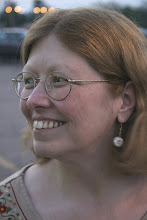 Meredith Sue Willis is one of those writers whose work is often overlooked – perhaps because she has been labeled as an Appalachian writer. There’s a tendency to categorize writers and books by region or genre, but the result can be limiting in unintended ways. “Appalachian writer” is a term I’ve often used myself to draw attention to the works of writers I admire from that mountain region. But it seems that there may be a stigma associated with being classified as “Appalachian” which lends itself to some widely held stereotypes about mountain people. Why does “Appalachian writer” not have the same cachet as, say, “Southern writer?” After all, Appalachia is a big place and reaches as far south as Mississippi, Alabama, and Georgia. Just as geographic regions can overlap, so can literary genres. A bestselling mystery or legal thriller can also be literary fiction. And, an Appalachian writer can also be many other things as well – including a Southern writer (Bobbie Ann Mason, Lee Smith immediately come to mind).
Meredith Sue Willis is one of those writers whose work is often overlooked – perhaps because she has been labeled as an Appalachian writer. There’s a tendency to categorize writers and books by region or genre, but the result can be limiting in unintended ways. “Appalachian writer” is a term I’ve often used myself to draw attention to the works of writers I admire from that mountain region. But it seems that there may be a stigma associated with being classified as “Appalachian” which lends itself to some widely held stereotypes about mountain people. Why does “Appalachian writer” not have the same cachet as, say, “Southern writer?” After all, Appalachia is a big place and reaches as far south as Mississippi, Alabama, and Georgia. Just as geographic regions can overlap, so can literary genres. A bestselling mystery or legal thriller can also be literary fiction. And, an Appalachian writer can also be many other things as well – including a Southern writer (Bobbie Ann Mason, Lee Smith immediately come to mind).In the afterword to her new book, Meredith Sue Willis writes, “This collection is called Out of the Mountains because that is where the stories come from, and so do I. . . . One of my projects in writing these stories has been to wonder, with so much slipping into the past, what is still unique about our region. I am also interested in what Appalachians retain and take along when they leave home – when they go out of the mountains – and also what Appalachian attitudes and insights contribute to the larger culture.”
I started reading Meredith Sue Willis’ work nearly a decade ago when one of her short stories had been submitted to me when I was the fiction editor of the literary journal Paper Street. I wanted to publish that piece, but the editor of another journal beat me to it. I was glad to see the main character of that story also appear in several of the stories in Out of the Mountains. In this collection of a dozen stories, characters sometimes reappear in several stories so that the reader sees them at various time points and from different perspectives. However, these are not linked stories. What does connect the stories is a sense of displacement and restlessness – insiders who leave the mountains to live elsewhere and outsiders who come to the mountains. There’s a tension between belonging and not belonging, of insider vs. outsider, of rural vs. urban, of traditional customs vs. new ways.
The cover photograph was taken by my husband, Kevin Scanlon. Both Kevin and I had contributed work to the 2008 “West Virginia Issue” of Hamilton Stone Review which Willis edited. Since Willis was familiar with Kevin’s series of West Virginia photographs, she later requested some of his images for consideration as possible covers for this short story collection. At the time we were curious about why she chose the one she selected, and after reading the stories I now understand how well it fits. These are stories with unexpected juxtapositions and clashes which show the changing culture.
Willis writes, “A great beauty of fiction, of course, is that it can be about many things at once . . . . I consider fiction to be a mutual, human grace – to know people we’ll never meet, beliefs we’ll never hold, experiences we’ll never have in our actual lives. It’s what I read for, and why I write.”
Meredith Sue Willis is the author of sixteen books and she teaches creative writing a
 t New York University, School of Professional and Continuing Studies. She also maintains several blogs: Literature and the Web, Online Journal, as well as Resources for Writers. Two of her books have been published this year: Ten Strategies to Write Your Novel (Montemayor Press) and the short story collection Out of the Mountains: Appalachian Stories (Ohio University Press).
t New York University, School of Professional and Continuing Studies. She also maintains several blogs: Literature and the Web, Online Journal, as well as Resources for Writers. Two of her books have been published this year: Ten Strategies to Write Your Novel (Montemayor Press) and the short story collection Out of the Mountains: Appalachian Stories (Ohio University Press). Upcoming appearances include the West Virginia Book Festival in Charleston, West Virginia, October 16th – 17th at the Charleston Civic Center and the Kentucky Book Fair, November 13th.
























